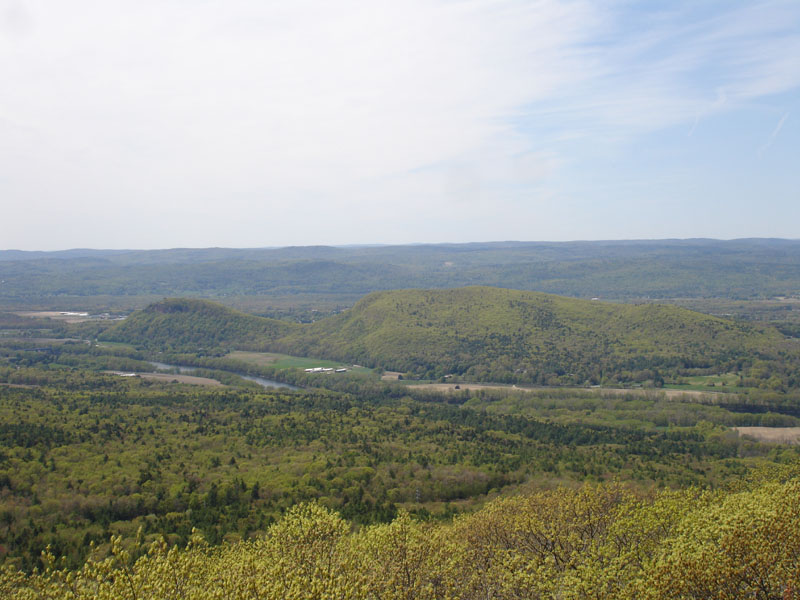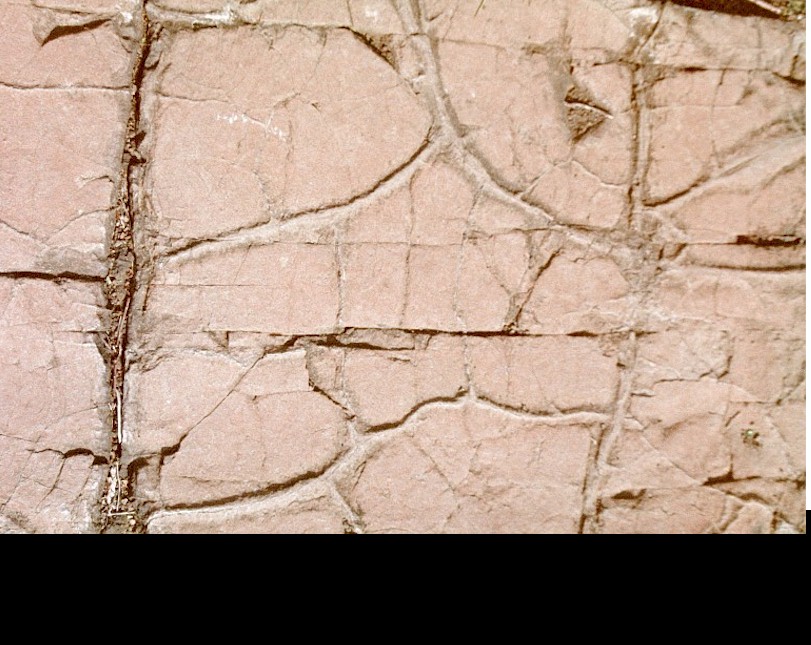|
Pocumtuck Ridge
The Pocumtuck Range, also referred to as the Pocumtuck Ridge, is the northernmost subrange of the Metacomet Ridge mountain range of southern New England. Located in Franklin County, Massachusetts, between the Connecticut River and the Deerfield River valleys, the Pocumtuck Range is a popular hiking destination known for its continuous high cliffs, scenic vistas, and microclimate ecosystems.''Massachusetts Trail Guide, 8th ed.'' Appalachian Mountain Club, 2004, Boston.Farnsworth, Elizabeth J"Metacomet-Mattabesett Trail Natural Resource Assessment.", 2004. PDF file. Cited Nov. 20, 2007Zen, E-an, Goldsmith, Richard, Ratcliffe, N.M., Robinson, Peter, Stanley, R.S., Hatch, N.L., Shride, A.F., Weed, E.G.A., and Wones, D.R. ''Bedrock Geologic Map of Massachusetts'' USGS. 1983 Geography The range, 11 miles (18 km) long by 1.75 miles (2.8 km) wide at its widest point, includes, from south to north, Sugarloaf Mountain of Deerfield; a central high ridge most often called ''Pocum ... [...More Info...] [...Related Items...] OR: [Wikipedia] [Google] [Baidu] |
Metacomet Ridge
The Metacomet Ridge, Metacomet Ridge Mountains, or Metacomet Range of southern New England is a narrow and steep fault-block mountain ridge known for its extensive cliff faces, scenic vistas, microclimate ecosystems, and rare or endangered plants. The ridge is an important recreation resource located within of more than 1.5 million people, offering four long-distance hiking trails and over a dozen parks and recreation areas, including several historic sites. It has been the focus of ongoing conservation efforts because of its natural, historic, and recreational value, involving municipal, state, and national agencies and nearly two dozen non-profit organizations.United States Census Bureau Data retrieved December 20, 2007. The Metacomet Ridge extends from |
Trap Rock
Trap rock, also known as either trapp or trap, is any dark-colored, fine-grained, non-granitic intrusive or extrusive igneous rock. Types of trap rock include basalt, peridotite, diabase, and gabbro.Neuendorf, K.K.E., J.P. Mehl, Jr., and J.A. Jackson, J.A., eds. (2005) ''Glossary of Geology'' (5th ed.) American Geological Institute, Alexandria, Virginia. 779 pp. Trapp (trap) is also used to refer to flood (plateau) basalts, e.g. the Deccan Traps and Siberian Traps.Le Maitre, R. W., ed. (2002) ''Igneous Rocks: A Classification and Glossary of Terminology''. Cambridge University Press, New York. 236 pp. The erosion of trap rock created by the stacking of successive lava flows often created a distinct stairstep landscape from which the term ''trap'' was derived from the Swedish word ''trappa'', which means "stairway". The slow cooling of magma either as a sill or as a thick lava flow sometimes creates systematic vertical fractures within the resulting layer of trap rock. Th ... [...More Info...] [...Related Items...] OR: [Wikipedia] [Google] [Baidu] |
Sleeping Giant (Connecticut)
Sleeping Giant (also known as the Blue Hills and Mount Carmel), (''Hobbomock'' in Quinnipiac), is a rugged traprock mountain with a high point of , located north of New Haven, Connecticut. A prominent landscape feature visible for miles, the Sleeping Giant receives its name from its anthropomorphic resemblance to a slumbering human figure as seen from either the north or south. The Giant is known for its expansive clifftop vistas, rugged topography, and microclimate ecosystems. Most of the Giant is located within Sleeping Giant State Park. The mountain is a popular recreation site: over of hiking trails traverse it including of the Quinnipiac Trail. Quinnipiac University is located at Mount Carmel's foot in Hamden. Geography The Sleeping Giant, long by wide, is located in Hamden with its eastern edge falling into Wallingford. The Giant's profile features distinct "head," "chin," "chest," "hip," "knee," and "feet" sections topographically represented by traprock outcrops an ... [...More Info...] [...Related Items...] OR: [Wikipedia] [Google] [Baidu] |
Beaver
Beavers are large, semiaquatic rodents in the genus ''Castor'' native to the temperate Northern Hemisphere. There are two extant species: the North American beaver (''Castor canadensis'') and the Eurasian beaver (''C. fiber''). Beavers are the second-largest living rodents after the capybaras. They have stout bodies with large heads, long chisel-like incisors, brown or gray fur, hand-like front feet, webbed back feet and flat, scaly tails. The two species differ in the shape of the skull and tail and fur color. Beavers can be found in a number of freshwater habitats, such as rivers, streams, lakes and ponds. They are herbivorous, consuming tree bark, aquatic plants, grasses and sedges. Beavers build dams and lodges using tree branches, vegetation, rocks and mud; they chew down trees for building material. Dams impound water and lodges serve as shelters. Their infrastructure creates wetlands used by many other species, and because of their effect on other organisms in the ... [...More Info...] [...Related Items...] OR: [Wikipedia] [Google] [Baidu] |
Native Americans (United States)
Native Americans, also known as American Indians, First Americans, Indigenous Americans, and other terms, are the Indigenous peoples of the mainland United States (Indigenous peoples of Hawaii, Alaska and territories of the United States are generally known by other terms). There are 574 federally recognized tribes living within the US, about half of which are associated with Indian reservations. As defined by the United States Census, "Native Americans" are Indigenous tribes that are originally from the contiguous United States, along with Alaska Natives. Indigenous peoples of the United States who are not listed as American Indian or Alaska Native include Native Hawaiians, Samoan Americans, and the Chamorro people. The US Census groups these peoples as " Native Hawaiian and other Pacific Islanders". European colonization of the Americas, which began in 1492, resulted in a precipitous decline in Native American population because of new diseases, wars, ethnic clea ... [...More Info...] [...Related Items...] OR: [Wikipedia] [Google] [Baidu] |
Pocumtuc
The Pocumtuc (also Pocomtuck or Deerfield Indians) were a Native American tribe historically inhabiting western areas of Massachusetts. Settlements Their territory was concentrated around the confluence of the Deerfield and Connecticut Rivers in today's Franklin County. Their homelands also included much of current-day Hampden and Hampshire Counties, plus areas now in northern Connecticut and southern Vermont. Their principal village, also known as Pocumtuck, was in the vicinity of the present day village of Deerfield. Language Their language, now extinct, was an R-dialect of the Algonquian language family, most likely related to the Wappinger and nearby Mahican tribes of the Hudson River Valley.Swanton, John R. ''The Indian Tribes of North America'', pp. 23-24. Smithsonian Institution Bureau of American Ethnology Bulletin 145. Washington DC.: Government Printing Office, 1952. Subsistence Little is known about the Pocumtuc people, but they likely led lifestyles sim ... [...More Info...] [...Related Items...] OR: [Wikipedia] [Google] [Baidu] |
Mount Tom Range
The Mount Tom Range is a traprock mountain range located in the Connecticut River Valley of Massachusetts. It is part of the Metacomet Ridge that extends from Long Island Sound near New Haven, Connecticut, north through the Connecticut River Valley of Massachusetts to nearly the Vermont border. A popular outdoor recreation resource, the range is known for its continuous west facing cliffs and its rugged, scenic character. It is also notable for its unique microclimate ecosystems and rare plant communities, as well as significant historic sites, such as the ruins of the 18th century Eyrie House located on Mount Nonotuck.*''The Metacomet-Monadnock Trail Guide''. 9th Edition. The Appalachian Mountain Club. Amherst, Massachusetts, 1999.Farnsworth, ElizabethJ.Metacomet-Mattabesett Trail Natural Resource Assessment." 2004. PDF wefile cited November 1, 2007. Geography The Mount Tom Range rises steeply between above the Connecticut River Valley below; it is roughly 4.5 miles (7 km) ... [...More Info...] [...Related Items...] OR: [Wikipedia] [Google] [Baidu] |
Holyoke Range
The Holyoke Range or Mount Holyoke Range is a traprock mountain range located in the Connecticut River Valley of Massachusetts. It is a sub-range of the narrow, linear Metacomet Ridge that extends from Long Island Sound near New Haven, Connecticut north through the Connecticut River Valley of Massachusetts to the Vermont border. A popular hiking destination, the range is known for its anomalous east–west orientation, high ledges and its scenic character. It is also notable for its unique microclimate ecosystems and rare plant communities, as well as significant historic sites, such as the Mount Holyoke Summit House and the Horse Caves.Farnsworth, Elizabeth J"Metacomet-Mattabesett Trail Natural Resource Assessment." (2004). PDF file. Retrieved November 20, 2007. Retrieved December 10, 2007 Holyoke Range vs. Mount Holyoke Range Both ...[...More Info...] [...Related Items...] OR: [Wikipedia] [Google] [Baidu] |
Northfield, Massachusetts
Northfield is a New England town, town in Franklin County, Massachusetts, Franklin County, Massachusetts, United States. Northfield was first settled in 1673. The population was 2,866 at the 2020 census. It is part of the Springfield, Massachusetts Springfield metropolitan area, Massachusetts, Metropolitan Statistical Area. The Connecticut River runs through the town, dividing West Northfield from East Northfield and the village of Northfield, where the town hall is located. Part of the town is included in the census-designated place of Northfield (CDP), Massachusetts, Northfield. History The village of Skakeat/Squakheag was the site of modern-day Northfield and was home to the Nashaway Nipmuc and Sokoki Abenaki. Northfield was first colonized in 1673 by European colonization of the Americas, European settlers and was officially incorporated in 1723. ''Indian Land Deeds for Hampshire County, Including Later Berkshire, Franklin, and Hampden Counties,'' gives the name of the otan ... [...More Info...] [...Related Items...] OR: [Wikipedia] [Google] [Baidu] |
New Hampshire
New Hampshire is a U.S. state, state in the New England region of the northeastern United States. It is bordered by Massachusetts to the south, Vermont to the west, Maine and the Gulf of Maine to the east, and the Canadian province of Quebec to the north. Of the 50 U.S. states, New Hampshire is the List of U.S. states and territories by area, fifth smallest by area and the List of U.S. states and territories by population, tenth least populous, with slightly more than 1.3 million residents. Concord, New Hampshire, Concord is the state capital, while Manchester, New Hampshire, Manchester is the largest city. New Hampshire's List of U.S. state mottos, motto, "Live Free or Die", reflects its role in the American Revolutionary War; its state nickname, nickname, "The Granite State", refers to its extensive granite formations and quarries. It is well known nationwide for holding New Hampshire primary, the first primary (after the Iowa caucus) in the United States presidential election ... [...More Info...] [...Related Items...] OR: [Wikipedia] [Google] [Baidu] |




_b_068_white_background.jpg)



